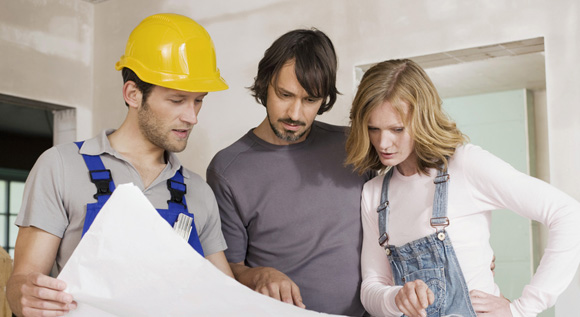How far have we come in making our buildings more energy efficient?
The Federal Government has set itself ambitious goals for making our buildings virtually carbon-neutral. So let’s take stock and see where we stand on the implementation of these goals.
 © fotolia/weseetheworld
© fotolia/weseetheworld
The climate change mitigation goals adopted by the German government are unarguably quite ambitious. By 2050, Germany’s entire building stock is to be virtually climate-neutral. Right now, buildings account for around 35 per cent of our total energy consumption and for almost one third of greenhouse gas emissions. Heating our homes and boiling water is still far too energy-intensive. How far have we come in our efforts to create a virtually carbon-neutral building sector?
Leveraging energy efficiency and renewable energy
First of all, let’s take a look at the relevant parameters. In order to determine how much a building contributes to climate change due to the amount of heat it consumes, we need to assess its primary energy consumption. Primary energy consumption includes not only the energy consumed in a building, but also the amount of energy that goes into generating, converting and distributing the energy used. (To find out more about primary energy, please click here). In order for Germany’s building stock to become virtually climate-neutral, we need to cut primary energy demand by 80 per cent by 2050 compared with 2008 levels. As we do so, it is important to make sure that we use energy a lot more efficiently than in the past, for example by using modern heating systems, highly efficient windows and, of course, a well insulating building envelope. (Please click here for FAQs on thermal insulation). Apart from improving energy efficiency, switching to renewable energy is key. Solar energy, geothermal energy and residual heat are virtually climate-neutral types of energy.
We have come a long way, but we are not there yet
The Federal Government’s fifth monitoring report, which was published in December 2016, shows that we have both considerably reduced heat demand and substantially expanded renewable energy. In 2015, renewables accounted for 13.2 per cent of final energy consumption. This means that the interim target we have set ourselves, namely for renewables to account for 14 per cent by 2020, has almost been reached. As far as heat demand in buildings is concerned, we are also headed in the right direction, even though further efforts need to be undertaken. In 2015, heat consumption was 11.1 per cent lower compared with 2008. By 2020, this figure is to reach 20 per cent. Primary energy consumption has been considerably reduced in the last few years, falling by 15.9 per cent between 2008 and 2015 alone. This was despite the fact that the number of new buildings and housing units increased over the same period.
In order to make Germany’s building stock virtually climate neutral, the Federal Government adopted an Energy Efficiency Strategy for Buildings. The measures adopted under this strategy, which was published in 2015, include introducing stricter energy standards for buildings, providing funding for investment in energy efficiency solutions, and switching to renewable energy sources. In addition to this, the Federal Government aims to expand its advisory and information services on energy.
Government funding programmes to be continually improved
By investing in making your building or apartment more energy-efficient or by using renewable energy technology, you will not only be able to considerably save on your energy bill; you will also be eligible for government funding. The Federal Government has made available more than €17 billion of funding up to 2020 to help private households, companies and municipalities to invest in energy efficiency measures. The most important areas of funding are listed below:
- Energy-efficient construction and retrofitting: The KfW programmes on energy-efficient construction and retrofitting – which are part of the government’s CO2 Building Renovation Programme – are an integral part of driving forward Germany’s energy transition. Since 2006, more than 4.6 million housing units have been renovated and made more energy efficient; every second new home that is constructed in Germany receives funding under a KfW programme, which means that these homes have higher energy standards compared to what is required under the German Energy Conservation Ordinance. The KfW programmes are continually being enhanced. In 2016, KfW added the ‘Efficiency House 40 Plus’ standard, providing special funding for highly energy-efficient homes.
- Heating with renewable energy: Under the Market Incentive Programme (MAP), funding is provided for renewables-based installations used for the heating and cooling of homes, such as solar thermal energy installations, heat pumps and biomass installations. Since the 2015 amendment of the Programme, which saw funding options for renewables-based installations expanded, the number of applications for funding has substantially increased. In 2016, more than 70,000 applications were submitted, which translated into €180 million in funding granted.
- Efficient heating solutions: In 2016, the Federal Government adopted its Energy Efficiency Incentive Programme to supplement the CO2 Building Renovation Programme and the Market Incentive Programme and to provide funding for particularly efficient combined solutions for heating and cooling. Under the heating optimisation programme, funding is provided for the installation of energy efficient pumps and for improving the performance of heating systems.

